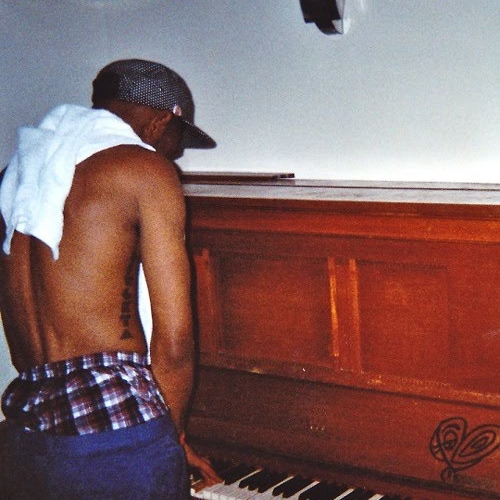Thomas Tobias Montoya
age ~80
from Belen, NM
- Also known as:
-
- Thomas T Montoya
- Tobias Thomas Montoya
- Tobias T Montoya
- Tomas Tobias Montoya
- Tom T Montoya
- Thomas Ontoya
- Thomas Montoya Tobias
Thomas Montoya Phones & Addresses
- Belen, NM
- Mcintosh, NM
- 18 Parador Rd, Los Lunas, NM 87031 • (505)8660422
- Santa Rosa, CA
- Austin, TX
- Lawrenceville, GA
- Salinas, CA
License Records
Thomas Patrick Montoya
License #:
E-5483 - Expired
Category:
Engineering Intern
Lawyers & Attorneys

Thomas C. Montoya, Albuquerque NM - Lawyer
view sourceOffice:
Atkinson & Kelsey, P.A.
2155 Louisiana Boulevard, Ne, Suite 2000, Albuquerque, NM 87110
2155 Louisiana Boulevard, Ne, Suite 2000, Albuquerque, NM 87110
Mailing Address:
P.O. Box 3070, Albuquerque, NM, 87110
Phone:
(505)8833070 (Phone), (505)8893111 (Fax)
Specialties:
Family Law
Appellate Practice
Litigation
Military Divorce
Complex Litigation
Civil Appeals
Divorce
Appellate Practice
Litigation
Military Divorce
Complex Litigation
Civil Appeals
Divorce
Memberships:
American Bar Association (Member, Law in the Fifty States Committee, 1988-)
State Bar of New Mexico (Member, Family Law Section
Chair, 1990-1991
Legislation Committee
Statewide Rules of Civil Procedure for Domestic Relations Cases)
American Law Institute.
State Bar of New Mexico (Member, Family Law Section
Chair, 1990-1991
Legislation Committee
Statewide Rules of Civil Procedure for Domestic Relations Cases)
American Law Institute.
ISLN:
902409772
Admitted:
1981, New Mexico
1985, U.S. District Court, District of New Mexico
1985, U.S. District Court, District of New Mexico
University:
Stanford University
Law School:
University of Southern California, J.D., 1978
Reported:
Ruggles v. Ruggles, 116 N.M. 52, 860 P.2d 182 (S.Ct. 1993) (Leading retirement division case); Huntington National Bank v. Sproul, 116 N.M. 254, 861 P.2d 935 (S. Ct 1993); Pillars v. Thompson, 103 N.M. 704, 712 P.2d 1366 S.Ct. 1986); Wood v. Cunningham, 140 N.M. 699, 147 P.3d 1132 (Ct. App. 2006); Leeder v. Leeder 118 N.M. 603, 884 P.2d 494 (Ct. App. 1994) (Child Support Guidelines: business: tax); Ruggles v. Ruggles 1114 N.M. 63, 834 P.2d 940 (Ct. App. 1992); Alfieri v. Alfieri, 105 N.M. 373, 733 P.2d 4 (Ct. App. 1987) (Custody; right to travel).
Links:
Site
Biography:
Martindale-Hubbell "AV" Rating. Best Lawyers of America, 1995, 2005. Best of the Bar, New Mexico Business Weekly-Family Law, 2010. Southwest Super Lawyer, 2011, 2012. Author and Editor: New Mexico Dom...
Name / Title
Company / Classification
Phones & Addresses
Principal
Thomas C Montoya
Legal Services Office
Legal Services Office
2155 Louisiana Blvd NE, Albuquerque, NM 87110
President, Partner
ATKINSON & KELSEY, A PROFESSIONAL ASSOCIATION
Legal Services Office
Legal Services Office
PO Box 3070, Albuquerque, NM 87190
2155 Louisiana Blvd NE, Albuquerque, NM 87110
PO Box 3070, Albuquerque, NM 87190
(505)8833070
2155 Louisiana Blvd NE, Albuquerque, NM 87110
PO Box 3070, Albuquerque, NM 87190
(505)8833070
Principal
Atkinson and Kelsey PA
Legal Services Office
Legal Services Office
PO Box 3070, Albuquerque, NM 87190
2155 Louisiana Blvd NE, Albuquerque, NM 87110
(505)8833070
2155 Louisiana Blvd NE, Albuquerque, NM 87110
(505)8833070
Vice Presi, Director , Vice President
Experior Technologies Llc
Information Technology and Services · Whol Electronic Parts/Equipment
Information Technology and Services · Whol Electronic Parts/Equipment
7756 Northcross Dr SUITE 201, Austin, TX
Us Patents
-
Process For Testing A Semiconductor Device
view source -
US Patent:6433571, Aug 13, 2002
-
Filed:Jan 20, 2000
-
Appl. No.:09/488145
-
Inventors:Thomas T. Montoya - Austin TX
-
Assignee:Motorola, Inc. - Schaumburg IL
-
International Classification:G01R 3102
-
US Classification:324762, 324754
-
Abstract:A process for testing a semiconductor device includes placing a probe card into a testing apparatus wherein the probe card has a base and a probe tip. The probe tip has a probe end with a first end surface and a first width. The process also includes placing the semiconductor device into the testing apparatus wherein the semiconductor device has an electrode having a second width that is narrower than the first width of the probe end. The process also includes reducing a distance between the base of the probe card and the semiconductor device for a first distance wherein the probe end contacts the electrode and the probe end surface is substantially parallel to a primary surface of the semiconductor device.
-
Prober Interface Plate
view source -
US Patent:20010043073, Nov 22, 2001
-
Filed:Mar 9, 1999
-
Appl. No.:09/264748
-
Inventors:THOMAS T. MONTOYA - AUSTIN TX, US
-
International Classification:G01R031/02
-
US Classification:324/754000
-
Abstract:A prober interface plate is formed as a single body of ceramic material. The plate has highly planar surfaces obtained by machining and polishing the ceramic plate.
-
Bore Probe Card And Method Of Testing
view source -
US Patent:20030102878, Jun 5, 2003
-
Filed:Oct 24, 2002
-
Appl. No.:10/281071
-
Inventors:Thomas Montoya - Austin TX, US
-
International Classification:G01R031/02
-
US Classification:324/754000
-
Abstract:A test apparatus using a bore probe card for testing a semiconductor die is disclosed. The bore probe card includes one or more bore probes that operate to bore into the bond pads of the semiconductor die without laterally scrubbing across the surface of the bond pad. The bore probes generally contact the bond pads at approximately 90 and a lateral pattern between the bore probe card and the semiconductor die produces the boring action of the bore probes.
-
Vacuum System And Method For Securing A Semiconductor Wafer In A Planar Position
view source -
US Patent:62902741, Sep 18, 2001
-
Filed:Apr 9, 1999
-
Appl. No.:9/289045
-
Inventors:Thomas T. Montoya - Austin TX
-
Assignee:TSK America, Inc. - Farmington Hills MI
-
International Classification:B66C 102
B25B 1100 -
US Classification:294 641
-
Abstract:A system and method for holding a semiconductor wafer substantially flat on a chuck and for cooling the chuck is provided. The system for securing a wafer on a chuck includes first and second conduits, first and second valves, and a first sensor. The first and second conduits each fluidly connect a first plurality of holes in the chuck to a vacuum source. The first and second valves are disposed within the first and second conduits respectively. The first sensor is in fluid communication with one of the first and second valves. The first sensor measures a first vacuum level applied to one of the first and second valves. In operation, one of the first and second valves opens to induce a vacuum force between the first plurality of holes in the chuck and a wafer disposed on the chuck. When the first vacuum level applied to one of the first and second valves is greater than a predetermined vacuum level, the wafer has been partially pulled down against the chuck. Thereafter, the other valve of first and second valves opens to increase the first vacuum force.
-
Process For Testing A Semiconductor Device
view source -
US Patent:58670327, Feb 2, 1999
-
Filed:Nov 30, 1995
-
Appl. No.:8/565141
-
Inventors:Thomas T. Montoya - Austin TX
-
Assignee:Motorola, Inc. - Schaumburg IL
-
International Classification:G01R 3102
-
US Classification:324762
-
Abstract:Large diameter probe tips (42) can be used to probe a semiconductor device (60). The probe tips (42) are oriented more perpendicular to the surface of the semiconductor device (60) and are less likely to cause damage to the semiconductor device (60). The probe tips (42) can be used with a semiconductor device (60) having elongated electrodes (64) such that a small pitch for the electrodes can be used. Small diameter probe tips (102) can also be used and have a reduced likelihood of contacting a passivation layer (36) during probing.
-
Spiral Chuck
view source -
US Patent:6271676, Aug 7, 2001
-
Filed:Mar 2, 1999
-
Appl. No.:9/261054
-
Inventors:Thomas T. Montoya - Austin TX
-
Assignee:TSK America, Inc. - Farmington Hills MI
-
International Classification:G01R 3126
-
US Classification:324765
-
Abstract:A chuck is provided for holding a semiconductor wafer using a suction force. The chuck includes a chuck plate and may further include a manifold plate, and a seal plate to form a laminated chuck configuration. The chuck plate is disposed about a first axis and includes a first contact region disposed on a first side. The chuck plate further includes a first groove within the first contact region extending generally spirally outwardly from a first location proximate to the first axis to a second location within the first contact region. The chuck plate further includes a first plurality of vacuum holes extending from the first groove into the first side of the chuck plate. A method is provided for a probing a test pad on a semiconductor die disposed on a semiconductor wafer and removing an oxide layer disposed on the test pad. A probe needle contacts the test pad and is overdriven less than or equal to 1 micron into the test pad. The chuck holding the semiconductor wafer is moved in four substantially linear movements defining a substantially quadrangular area wherein each side of the quadrangular area is less than or equal to 1 micron in length, to remove the oxide layer from the test pad.
-
Method For Probing A Semiconductor Wafer Using A Motor Controlled Scrub Process
view source -
US Patent:57739870, Jun 30, 1998
-
Filed:Feb 26, 1996
-
Appl. No.:8/606630
-
Inventors:Thomas T. Montoya - Austin TX
-
Assignee:Motorola, Inc. - Schaumburg IL
-
International Classification:G01R 104
-
US Classification:324757
-
Abstract:A process for probing a semiconductor wafer involves bringing the bond pads (63) of a semiconductor die (114) into contact with probes (122) of a probe card (120) by moving a probe chuck (110) in the Z-direction. Initial contact is made with "zero-overdrive. " The probe chuck is then moved in a small amount in the Z-direction to induce a pressure in the probe. Scrubbing of the probes against the pads is then performed by moving the probe chuck in the X and Y directions. During movement in the X and Y directions, the pressured induced in the probe is released, causing the probe to begin to break through an oxide layer (62) of the bond pad. If the oxide layer is not completely broken, the movement of the probe chuck in the Z and then X & Y directions is repeated until electrical contact between the probes and the bond pads is made.
-
Apparatus For Forming A Test Stack For Semiconductor Wafer Probing And Method For Using The Same
view source -
US Patent:56569432, Aug 12, 1997
-
Filed:Oct 30, 1995
-
Appl. No.:8/550477
-
Inventors:Thomas T. Montoya - Austin TX
K. David Woodliff - Austin TX -
Assignee:Motorola, Inc. - Schaumburg IL
-
International Classification:G01R 3102
-
US Classification:324754
-
Abstract:A semiconductor wafer to be tested is placed inside a prober. A probe card (20') is placed inside a specially designed cavity (32) of a prober interface plate (24) that is pre-mounted superjacent to a head plate of the prober. The bottom surface (34) of the cavity provides solid and uniform support for the probe card. The probe card can be lifted out of the cavity whenever a probe card changeover is required. A tester interface plate (60) is pre-mounted to a test head. The tester interface plate has interlocking alignment pins (68 & 68') which are self-aligned into mating chamfered alignment holes (40 & 40') in the prober interface plate. Additionally, these two interface plates have mating interlocking features (46 & 70) for increased stability. The test stack allows the probe card to contact, typically through cantilevered pins; the active surface of the semiconductor wafer, and electrical probing or testing may then be performed on the semiconductor wafer.
Resumes

Thomas Montoya
view source
Thomas Montoya
view source
Thomas Montoya
view sourceLocation:
United States
Youtube
Myspace
Flickr

Thomas Montoya
view source
Thomas Montoya
view source
Thomas Montoya
view source
Thomas Montoya
view source
Thomas Montoya
view source
Thomas Montoya
view source
Thomas Montoya
view source
Thomas S Montoya
view sourceGoogleplus

Thomas Montoya
Work:
BYU - Department of Student Leadership (2007)
Education:
Brigham Young University - Public Administration, Brigham Young University - Youth Leadership

Thomas Montoya

Thomas Montoya

Thomas Montoya

Thomas Montoya

Thomas Montoya

Thomas Montoya

Thomas Montoya
Classmates

Thomas Montoya
view sourceSchools:
Cloverdale High School Cloverdale CA 1947-1951
Community:
Chris Bjorkman, Gary Newman, Glenda Buklis

Thomas Montoya | South Hi...
view source
Thomas Montoya | Greenfie...
view source
Thomas Montoya, Bolton Hi...
view source
Thomas Montoya, Brighton ...
view source
Montoya Thomas | J. S. C...
view sourceGet Report for Thomas Tobias Montoya from Belen, NM, age ~80
















